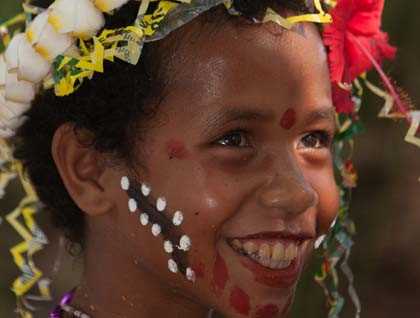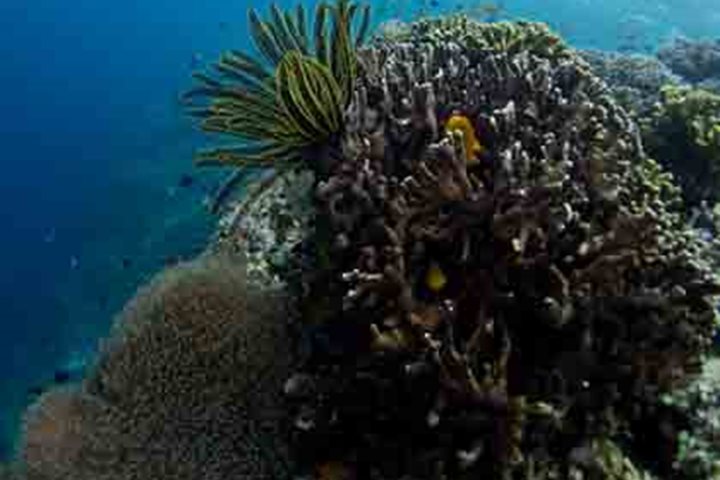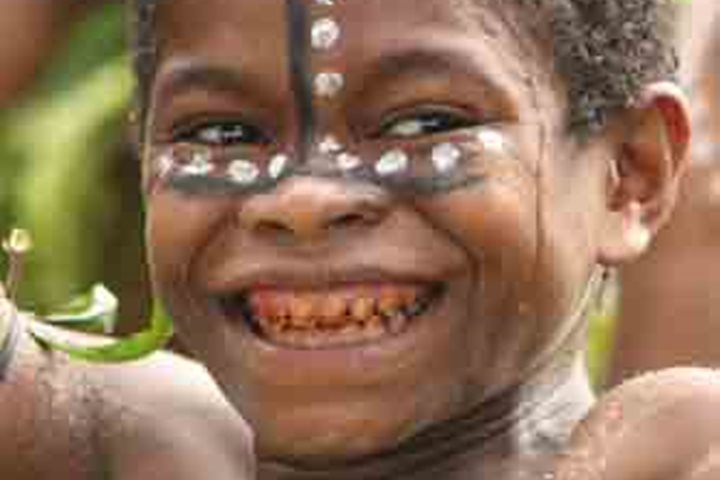This morning the National Geographic Orion meandered cheerfully amidst the Trobriand Islands, made famous worldwide by the anthropologist Bronislaw Malinowski when he dubbed them “The Islands of Love.” His work illuminated the intriguing courtships of the islanders in this matrilineal society in which women at times aggressively pursued their male interests and the act of lovemaking was seen as unconnected to childbearing. Yet while the villagers of Kuiyawa’s notions of love may have changed somewhat through time, their greeting to visitors remains as lovely as ever with cheerful men, women, and children bearing colorful frangipani leis welcoming us warmly.
Gathering in front of the school, the village presented us with a series of dances that were not only marvelous sights to behold but a fascinating demonstration of their mixed Melanesian and Polynesian heritage. One of the first dances, which they explained was inspired by a local cricket, performed by men and boys brandishing branches like spears had the fierce feeling of some of the other Melanesian performances we had seen previously, though somewhat softened by the cheery streamers and the presence of a few toddlers in the troupe lending their enthusiastic participation. Later dances had more the flavor of what most associate with Hawaii, with soothing music and subtle hip motions characteristic of the oceanic wanderers who link these two distant cultures. Coming as rather a surprise in the middle of the performance, a troupe of young men, marched forward to perform a dance that was created in mimicry of the movements of the soldiers seen in WWII. In contrast to the broad smiles of the previous dance, the lads moved in precise formation wielding the base of palm fronds like rifles and wearing stern faces with the exceptions of the occasional sheepish grin breaking free.
After the dance, some guests fanned out across the village and perused the stunning hardwood carvings made by the islanders while others explored the shallow reef lying immediately on its doorstep. Snorkelers were delighted to find a beautiful reef packed with blue staghorn corals complete with damsel and butterfly fish darting about in their midst. Some even encountered local spearfishers who demonstrated their skill with massive spears catching small fish and uprooting giant clams to provide much needed protein for the village.
Talking with the villagers, it became clear to crew, captain, and guests alike that the four-month drought they had suffered was taking a toll on the village. Vegetable gardens were straining and the village water supply had become brackish. Though hard to leave such a lovely place, we did so feeling we had shared with one another as we left what food, fuel, and water supplies we could spare including the ice water we had brought ashore (much to the delight and confusion of the local children who had never before tasted this frosty elixir).
The afternoon raced by as we sped northward with fabulous talks on the wild, romantic antics of sea slugs and the hard truth of climate change from divemaster Caitlyn Webster and expedition leader Adam Cropp, respectively. We then retired to a special gourmet dinner prepared by the kitchen staff followed by an enthralling sneak peek at the voyage chronicle prepared by resident videographer Eric Wehrmeister. Looking back on our adventures as they will soon draw to a close, one can’t help but get the paradoxical feeling that so much time has passed yet it has felt like no time at all. I suppose as the old adage suggests, this would be the consequence of having just too much fun along the way.






